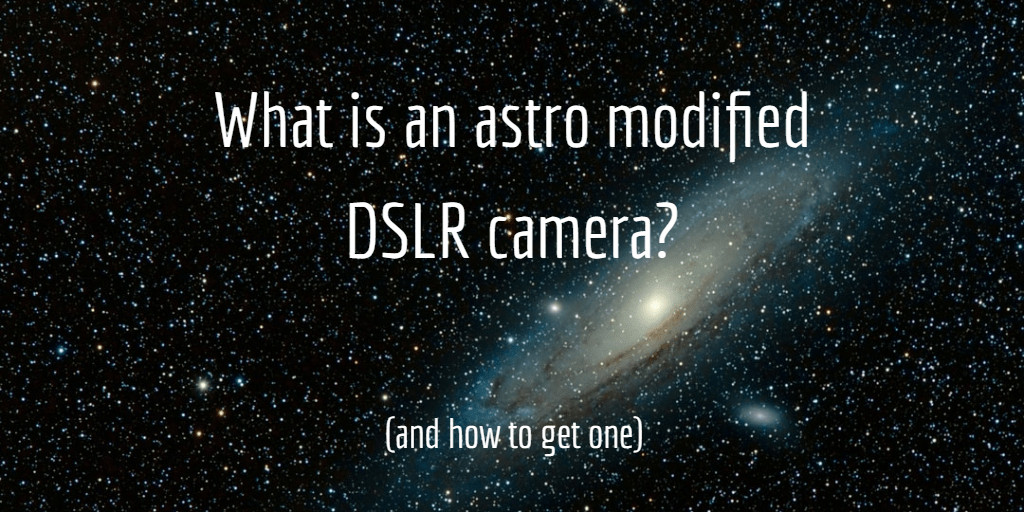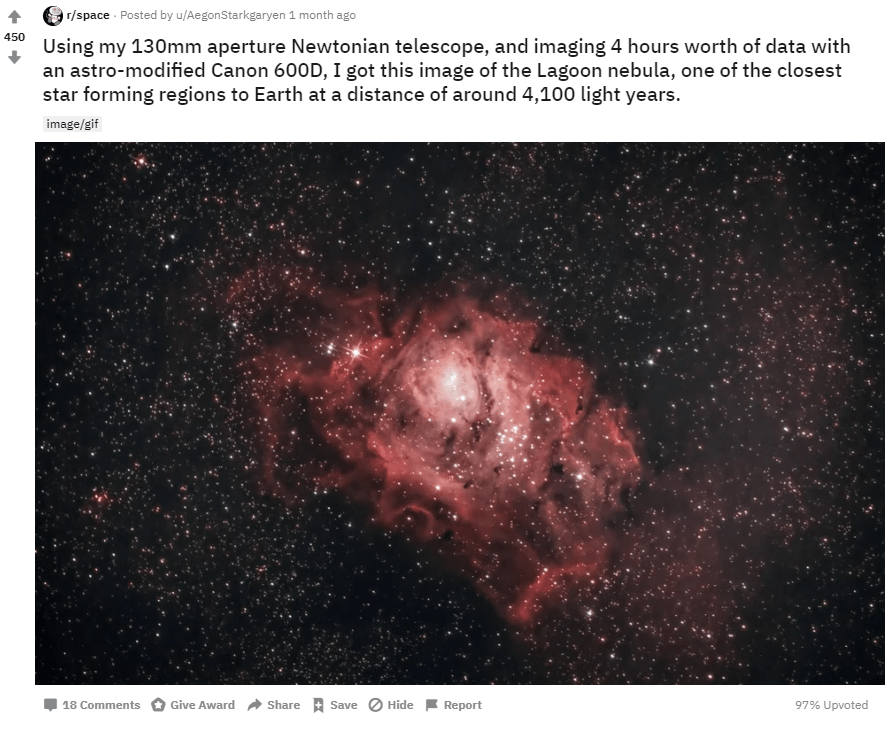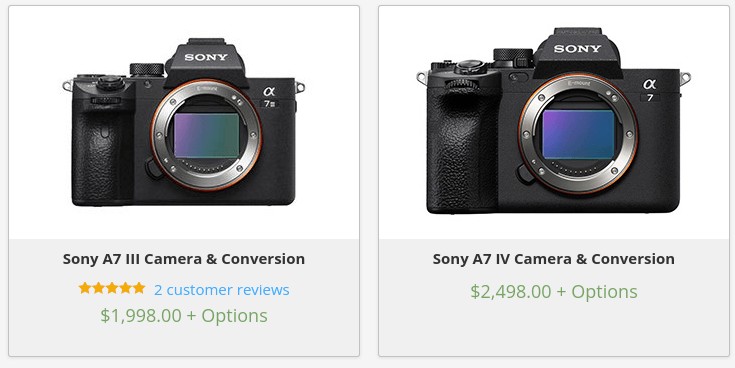You may have heard astrophotographers talk about using an astro modified camera or a modded camera.
But what does this mean, do you need one, and how do you get one?
In this article, we are going to explain all you need to know.
What is an Astro Modified Camera?
Astro modified cameras are regular DSLR or mirrorless cameras where part of the infrared (IR) filter has been removed to allow it to process color from deep-sky objects better.
Specifically, this makes it more capable of capturing images of nebulae by better capturing the Hydrogen Alpha spectral line (656nm) – this is the precise color emitted by hot clouds of Hydrogen gas that occur in emission nebulae.
Regular cameras are not designed to be sensitive to this wavelength, but with modification of the IR filter, they can be.
Types of Astro Camera Conversions
There are two main types of camera astro modification:
- H-Alpha Conversion
- Full Spectrum Conversion
H-Alpha Conversion
This is the most common type and usually what people have when they talk about astro modification.
This means that your camera will be capable of capturing hydrogen alpha light and visible light.
This is most popular for landscape astrophotographers since it enables the capture of the pink and red patches of hydrogen emissions in the night sky from nebulae or clouds of hydrogen gas.
One advantage of this type of conversion is that your camera will still be able to be able to be used in the daytime for regular photography.
You can see examples in these images:
Full Spectrum Conversion
Full spectrum converted cameras are capable of capturing all types of light:
- Infrared (IR)
- Ultraviolet (UV)
- Visible light
These make your camera more versatile and is favored for deep sky astrophotography.
A downside is that full spectrum modified cameras will not perform well for regular, daytime photography.
For more on this, here is a great video on the topic:
How To Get An Astrophotography Modified Camera
There are four ways to get an astro modified camera:
- Buy a pre-modded camera
- Buy an astro modified camera for sale
- Use an astro modification service
- Perform the modification yourself on your own camera
1. Buy a pre-modded camera
Both Canon and Nikon have manufactured pre-modded astrophotography cameras, the:
- Canon EOS Ra
- Canon 60Da
- Nikon D810a
The Canon 60Da DSLR was released in 2008 and has been long discontinued.
The Canon EOS Ra Mirrorless was released in 2019 but discontinued in 2021. You can still buy it used though:
Astrophotography Mirrorless Camera
- Modified filter for enhanced astrophotography imaging - better capture of H-Alpha light
- 30.3 Megapixel Full-frame Sensor
- Rf mount compatible with RF lenses and EF/EF-S lenses
The Nikon D810A was released in 2015 and has since been discontinued. It can be found available to buy still today though:
Astrophotography Modified DSLR Camera
- Employs an optical IR cut filter with specific transmission characteristics (characteristics in the 656nm range), enabling the capture of nebulae and distant galaxies that emit H-alpha wavelength in red
- 36.3MP FX-format CMOS sensor
- Virtual preview for more accurate focusing and composition for exposure longer than 30 seconds
2. Buy an astro modified camera for sale
You can buy astro modified cameras from certain companies:
- Life Pixel in the US.
- Astroshop in Europe. See for example here this full spectrum converted Sony A7S III.
3. Use an astro modification service
Life Pixel also offers to modify your camera by manually altering the sensor for you.
This is cheaper than buying a pre-modified model (above) but less risky than trying to do it yourself (below).
4. Modify your own camera
There are tutorials available online to show you how you can go through the process of opening up your camera.
See for example here:
Obviously, there is a risk involved in taking your own camera apart and playing around with the insides and so be sure that it is what you want to do before starting the process.
FAQs: Astro Modified Cameras
What does astro modified mean?
Astro modified means that the sensor of a DSLR or mirrorless camera has been altered to make better for astrophotography.
Specifically, it will be more sensitive to certain kinds of light emitted in space that cannot be seen with the naked eye or captured with regular camera sensors.
Do I need to modify my DSLR for astrophotography?
An astro modified camera will capture more but most astrophotographers use regular, non-modified cameras and still have great results.
It’s not necessary but you may choose to do it at some point in your astrophotography journey.
What is a “modded camera”?
A modded camera is another name for an astrophotography-modified camera that has had its sensor altered to better capture light from space.
How to modify a DSLR for astrophotography?
You can use professional services to modify your DSLR for astrophotography or you can follow guides to do it yourself (at your own risk).
Verdict: Astrophotography Modified Cameras
Images from astro modified cameras can be stunning but as a beginner getting into astrophotography you definitely do not need to do this. A regular DSLR or mirrorless camera can perform amazingly well for astrophotography.
Modifying a camera, or buying a pre-modded one, can be a great step for an experienced astrophotographer that has reached the limited of their existing camera and wants to explore new ways to push it further.
Related articles:









can i reverse the process on a 700D
You can purchase a Astronomik OWB Filter – Type 3 that will restore the ability of the camera to be used for terrestrial photography, like the original standard equipment filter